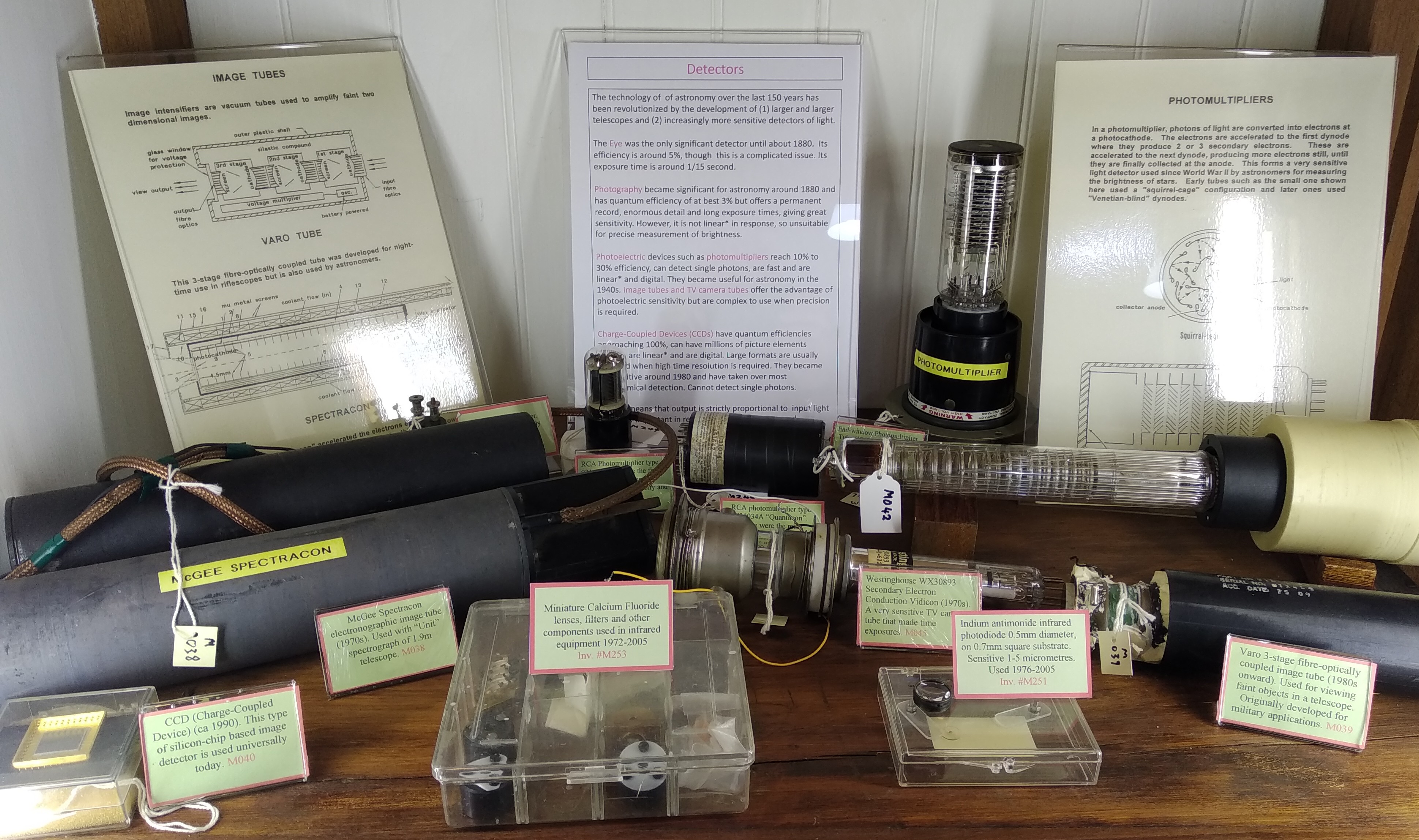|
Before the advent of sensitive photoelectric detectors,
photography dominated astronomy.
This display shows many of the detectors that were used in the 2nd half of
the 20th century.
The RCA931A was the first photomultiplier in general use for the measurement
of one object at a time.
The Mcgee Spectracon, the Varo image tube and the ISEC Vidicon are examples
of photoelectric devices that enabled pictures to be taken with electronic
aid.
The typical infrared detectors of the 1970s onwards were solid-state diodes
formed from Indium Antimonide and were only 0.5 mms in diameter.
In the late 20th century, CCD chips were introduced for detecting images, as
well as specialised chips for the infrared.
It was essential for any modern observatory to keep up-to-date with these
devices as they became available.
CCD detectors are almost 100% efficient, which is about
five times better than the best
photoelectric ones, themselves about five times more sensitive than
photography.
|
| Return to Photometry page |
